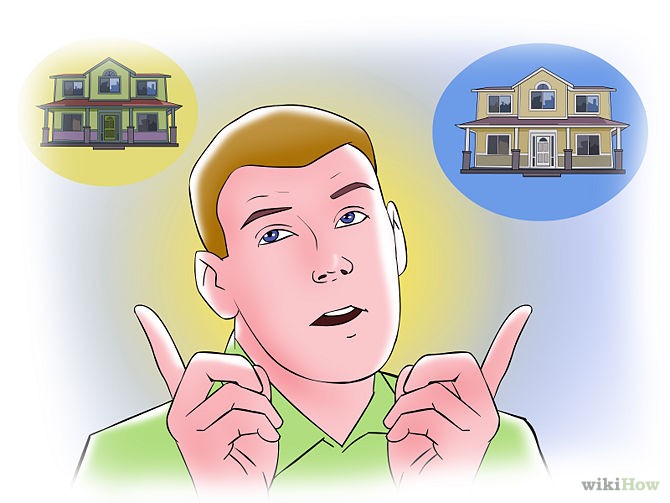Tax Planning for Owning a Second HomeKiplinger
Post on: 30 Июль, 2015 No Comment

Learn how mortgage interest, property taxes, rental property and tax-free profit affects your tax return.
See Also: Tax Planning for Life’s Major Events
Mortgage Interest
If you use the place as a second home — rather than renting it out as a business property — interest on the mortgage is deductible just as interest on the mortgage on your first home is. You can write off 100% of the interest you pay on up to $1.1 million of debt secured by your first and second homes that was used to acquire or improve the properties. (That’s a total of $1.1 million of debt, not $1.1 million on each home.) The rules that apply if you rent the place out are discussed later.
If You Rent the Home
Lots of second-home buyers rent their property part of the year to get others to help pay the bills. Very different tax rules apply depending on the breakdown between personal and rental use. If you rent the place out for 14 or fewer days during the year, you can pocket the cash tax-free. Even if you’re charging $10,000 a week, the IRS doesn’t want to hear about it. The house is considered a personal residence, so you deduct mortgage interest and property taxes just as you do for your principal home.
Rent for more than 14 days, though, and you must report all rental income. You also get to deduct rental expenses, and that gets complicated because you need to allocate costs between the time the property is used for personal purposes and the time it is rented.
If you and your family use a beach house for 30 days during the year and it’s rented for 120 days, 80% (120 divided by 150) of your mortgage interest and property taxes, insurance premiums, utilities and other costs would be rental expenses. The entire amount you pay a property manager would be deductible, too. And you could claim depreciation deductions based on 80% of the value of the house. If a house is worth $200,000 (not counting the value of the land) and you’re depreciating 80%, a full year’s depreciation deduction would be $5,800. You can always deduct expenses up to the level of rental income you report.
But what if costs exceed what you take in? Whether a loss can shelter other income depends on two things: how much you use the property yourself and how high your income is.
If you use the place more than 14 days, or more than 10% of the number of days it is rented — whichever is more — it is considered a personal residence and the loss can’t be deducted. (But because it is a personal residence, the interest that doesn’t count as a rental expense — 20% in our example — can be deducted as a personal expense.)
If you limit personal use to 14 days or 10%, the vacation home is considered a business and up to $25,000 in losses might be deductible each year. That’s why lots of vacation homeowners hold down leisure use and spend lots of time maintaining the property. Fix-up days don’t count as personal use. The tax savings from the loss (up to $7,000 a year if you’re in the 28% tax bracket) help pay for the vacation home. Unfortunately, holding down personal use means forfeiting the write-off for the portion of mortgage interest that fails to qualify as either a rental or personal-residence expense.
We say such losses might be deductible because real estate losses are considered passive losses by the tax law. And, passive losses are generally not deductible. But, there’s an exception that might protect you. If your adjusted gross income (AGI) is less than $100,000, up to $25,000 of such losses can be deducted each year to offset income such as your salary. (AGI is basically income before subtracting your exemptions and deductions.) As income rises between $100,000 and $150,000, however, that $25,000 allowance disappears. Passive losses you can’t deduct can be stored up and used to offset taxable profit when you ultimately sell the vacation house.

Tax-Free Profit
Although the rule that allows home owners to take up to $500,000 of profit tax-free applies only to your principal residence, there is a way to extend the break to your second home: make it your principal residence before you sell. That’s not as wacky as it might sound. Nor is it as lucrative as it used to be.
Some retirees, for example, are selling the big family home and moving full time into what had been their vacation home. Before 2009, this had a very special tax appeal. Once you live in that home for two years, up to $500,000 of profit could be tax free — including appreciation in value during the years it was your second home. (Any profit attributable to depreciation while you rented the place, though, would be taxable. Depreciation reduces your tax basis in the property and therefore increases profit dollar for dollar.)
A few years ago, though, Congress cracked down on this break for taxpayers who covert a second home to a principal residence. A portion of the gain on a subsequent sale of the home is ineligible for the home-sale exclusion of up to $500,000, even if the seller meets the two-year ownership and use tests. The portion of the profit that’s subject to tax is based on the ratio of the time after 2008 when the house was a second home or a rental unit to the total time you owned it.
This can still be a great deal if you’ve owned your second home for many years before the law changed. Let’s say you have owned a vacation home for 18 years and make it your main residence in 2014. Two years later, you sell the place. Since the five years after 2008 the place was your second home (2009 through 2013) is 25% of the 20 years you owned the home, only 20% of the gain is taxed. The rest qualifies for the exclusion of up to $500,000.














